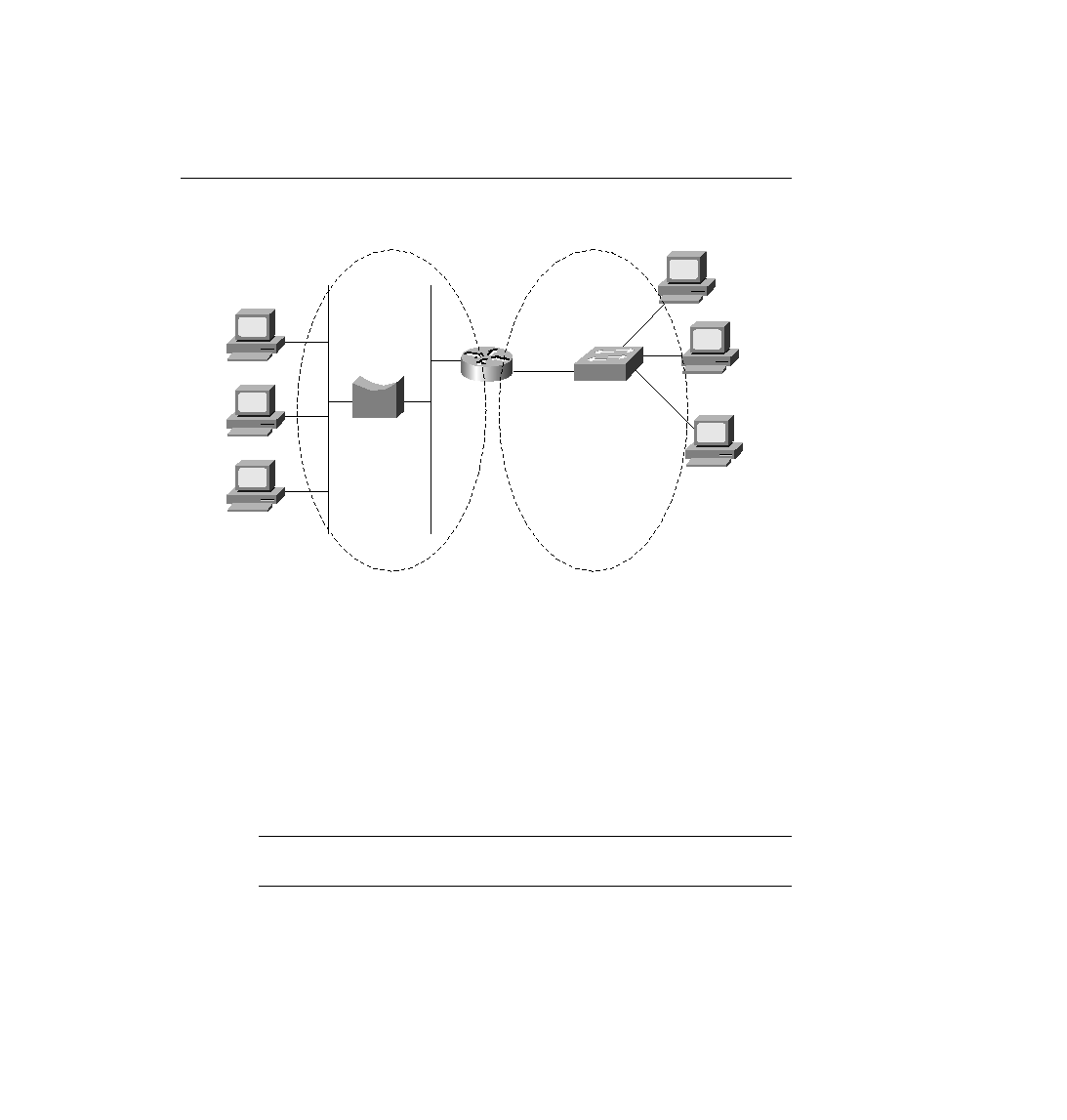
could result in a collision with a frame sent by any other NIC in the collision domain.
received by all other NICs in the broadcast domain.
bridges and switches had existed in the network in Figure 4-10, and if the router was later
added, Layer 3 IP and IPX addresses would have changed. To use the terminology in Chapter
3, two separate address groupings (for example, IP subnets) would be used for IP--one for the
devices to the left of the router and another for devices to the right of the router. A definition of
Layer 3 address groupings on LANs will help you understand VLANs better:
grouping--in other words, the same IP subnet or same IPX network.
store-and-forward processing, meaning that the entire frame is received before the first bit of